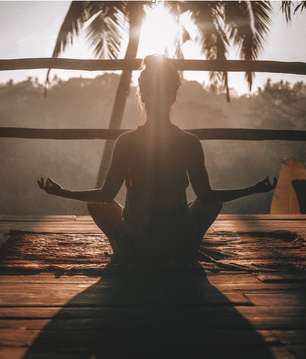 Balancing a busy schedule can be stressful, especially if there’s no time to relax and decompress. While burying yourself in work may seem normal, it can lead to burnout and unfulfillment. That’s why self care should be an important part of your daily routine, no matter how busy you are. Practicing self care doesn’t need to be time consuming or expensive, and there are simple ways to incorporate it into your daily routine. Here are a few ways to start. Set Boundaries An important part of self care is focusing on your needs, which means setting personal boundaries so you don’t overextend yourself. While work and other professional obligations are mandatory, what additional tasks take up your time? Are there unnecessary duties you can eliminate from your schedule? The answer is probably yes. Although you might want to do everything, learn how to say no to certain social events, favors, and commitments. Think about your personal needs and what will make you feel best. Determine if these extra tasks will benefit you or give you satisfaction, and if not, kindly decline them to make more time for yourself. Setting social boundaries will free up your busy schedule and allow you to be more present for the events that really matter. Get Organized Something as simple as reducing the clutter around your home can do wonders for your mental health. The state of your home can reflect how you feel, so if your home or workspace is unorganized, you might feel the same way. Although your home might be messy because you’re too busy, getting organized doesn’t doesn’t need to be a huge hassle. Organizing your space might mean making your bed each morning, putting away laundry, or simply picking up trash around the house. Tidying up your home a little bit each day can make the stress and clutter in your life seem more manageable and create a positive tone for the day. The visual representation of organization and cleanliness can also make you feel more accomplished and relieve additional stress. Along with physically cleaning your space, organizing your thoughts can also be an effective way to destress and practice self care. Throughout the day, try to mentally check in with yourself to assess how you’re feeling. If you feel tired or burnt out, it’s probably time to take a break and decompress. Another way to organize your thoughts is to start journaling. Writing down your feelings, both positive and negative, can put things into perspective and allow you to self-reflect. Work Out Exercise is known for reducing stress and boosting your mood which is why it’s one of the best ways to practice self care. Working out can also give you more energy, meaning it can help you be more productive with your busy schedule. Although working out may seem time consuming, there are easy ways to incorporate physical activity into your schedule. Even if you only have 30 minutes to spare each day, you can take a quick walk to clear your mind and stretch your legs. However, if you prefer more traditional workouts, try going to fitness classes or doing home workouts. Luckily, there are more ways than ever to stay active from home, and home workouts are much easier to incorporate into a hectic schedule since there’s no commute. If you don’t have a workout space, consider creating a home gym so you can choose what machines, weights, and equipment work best for your needs. Building a custom workout space also allows you to create a meditation or yoga area and include any other features that’ll help you make the most of your self care time. While this may seem like a large project, this space is an investment in you, your health, and your home. If you’re not sure where to start, research ways to utilize your home’s equity for financial assistance and examine areas of your home to renovate. Home equity loans are especially helpful for this type of upgrade as you can deduct the interest when used for home improvements and can use the money however you want. Schedule Time Most people think they don’t have enough time for self care, but you just need to make time for it as you would any other priority in your life. Dedicate time for yourself each week and make it a commitment. Treat your self care time as you would a meeting or appointment and schedule it into your calendar to keep you organized and accountable. Even if you only have 15 – 30 minutes each day, start there and work your way up. Remember, it’s better to practice self care everyday in short amounts rather than once in a while for an extended period of time. Doing something special for yourself frequently will help make self care a habit, similar to brushing your teeth each morning. Adding this time in gradually will also prevent your self care from feeling like a chore or another stressful task on your to-do list. Once you get used to doing this regularly, you can start including more time into your schedule. 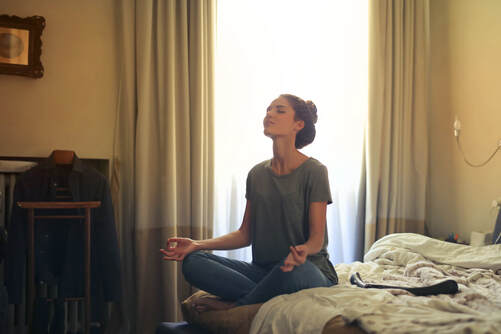 Photo Credit – Pexels / Andrea Piacquadio Photo Credit – Pexels / Andrea Piacquadio Stress is one of the biggest threats to the public's health, but it can be reduced at home with the right techniques. Everyday Health documents how stress is an epidemic for all ages and genders in the United States, one which is often not spoken of and is unseen. Anything can lead to a build-up of stress, from work commitments to personal problems, or even concern for affairs in the wider world. Even simply reaching middle age is now more stressful than ever before, with a Penn University study suggesting 45 to 64-year-olds are more stressed today than in the 1990s. The increase in stress will similarly place an increased demand on healthcare as it manifests itself into a range of conditions and illnesses. An overview by Maryville University on healthcare management outlines that that demand for medical and health services professionals will increase by 17% from 2014 to 2024, making a reduction in stress-related illness a must, to ease the burden on hospitals and doctors. Whilst these uncertain times heighten the potential for stress and anxiety, it is important to consider how you can healthy, physically and mentally. However, by implementing meditation or relaxation at home, you can help alleviate those concerns and the pressure on our healthcare professionals. What do you need to get started? Our handy guide will have you de-stressing in next to no time at all. Find a Spot It is important to find the right spot to get started. The ideal place will be somewhere you are not likely to get distracted or interrupted, at least for the few minutes you want to meditate. Make sure your cellular phone is off and, if you still have a house line, perhaps take it off the hook. It is also important to consider your posture. Yoga Journal explains there are several postures you can use and picking one that is likely to give you the best chance to relax is important. You do not want to choose a posture that aggravates a back injury, for example. Pick Your Time Timing is everything and if you are at home all day, you will know what time you regularly get interrupted. What time does the mailman come? Do you have kids who are likely to pop home at lunch? If you know your routine, you will know when you can get five minutes alone and in peace. Early morning is a great time to meditate as it is generally quieter, but also your period of self-reflection can help set you up for the day. Start Small Nobody is expecting you to sit for hours at your first attempt, meditation is like any other hobby; you start small and work your way up. Even sitting for a few minutes, or however long you feel comfortable, is a great place to begin. Do not let your mediation become a source of stress; do not worry if you are doing it right or not doing it enough, it is counterproductive. Focus The human mind is a wonderful thing; it stores up information and constantly sends signals around the body to keep you alert and healthy. However, to meditate properly you must find a way to turn off the little itches that appear, or to-do lists that pop into your head. The best way is to focus on your breathing, concentrating on the inhale and exhale, carefully and with purpose. That focuses your brain and will impact the other signals, much the same as your to-do list does not pop into your head when you are distracted gardening, cooking or playing sports. They are the basics, the easiest way to find yourself having some quiet relaxation time and hopefully destressing at some point in the day. There are no hard and fast rules to meditation, other than to ensure a better mental state of mind and ultimately, increased physical wellness too. A symptom of stress can be tension headaches, a debilitating and painful intrusion on your wellbeing. If you do suffer from these, it is worth reading our article How to Get Rid of Tension Headaches for some practical advice on solving the issue. ~Exclusively written by Lana Preston for allwayswell.com 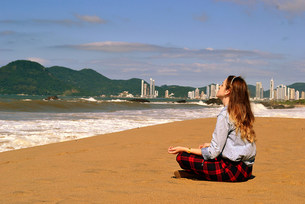 Despite my profession and calm demeanor, "calm" is not my base nature. It is something that I've learned and something that I've practiced through many years of martial arts, meditation and QiGong training. Do you ever feel like it is hard to calm down and focus your mind? Like the hustle and bustle of the digital world is overwhelming you? Like you have too many obligations and not enough time, and like even when you DO have time to rest and relax that it takes a long time to quiet your mind and be present? I still have times when I feel this way too. My dad always used to say, "We get good at what we practice, but most of the time we don't know what we're practicing." What are YOU Practicing today and in this moment? Happiness? Sadness? Joy? Overwhelm? Distraction? If you want to make a conscious choice to practice calm and focus, Meditation is a true and time tested way to achieve this. Based upon Taoist meditation practices, the Inner Smile Meditation can have profound effects on your body and mind. This simple meditation suggests that you “smile” to all of your internal organs and glands. It is a way of saying “thank you” to your body for working 24 hours, 7 days a week! Focusing your attention and smiling in this way can calm the autonomic nervous system, revitalize the internal organs, and increase the flow of blood and Qi. Below is the Inner Smile Meditation for the main Meridian Organ Systems. For more information, please refer to Mantak Chia’s book, Taoist Ways to Transform Stress into Vitality.
It is ok if you don’t know the exact locations of your organs. Just bringing awareness to your organs is benefit enough. Your body will love you just the same. Perform each exercise 9 times, twice a day. These exercises can affect your body and mind, so it is advisable to consult with your healthcare provider, but meditation is a safe way to practice calm and change negative thought patterns by connecting your calm inner center. Want to know more or have questions? Contact me anytime. As a veteran martial artist and a certified Thousand Hands Buddha Qigong instructor, I'm here to help! 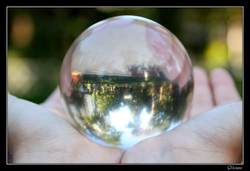 A coach once gave me an analogy I never forgot - that life is a juggling act and while most of the balls will bounce, health can be made of glass; if that ball breaks, it might never go back together quite the same. The key message? Health MUST be a priority in the juggling act we call life because of all the things we can recover from, a true health crisis can change our lives irrevocably and irreparably. Take a Lesson from the Heart - Put Your Health First Another good way to bring this message home, is to take a lesson from our own body processes - from the heart specifically. In our own bodies, the Heart actually pumps blood to itself first before it pumps blood anywhere else in the body. This is because the body knows that without proper nourishment of the Heart, everything else in the body will fail. Our lives are the same - if we don’t take care of ourselves, we cannot take care of anything or anyone else in our lives. Its imperative to put your health first, to have an eye on preventative care and stress management in particular, so that you know you are doing everything within reason in this moment in time to take care of yourself. If you can do that, you are much more likely to continue leading the long and healthy life you want to live. A Plan for Self Care that Works For YOUIf you don’t want to drop that glass ball, you’ve got to keep your eye on it, and the best way to do that is to have a plan for self care. I believe a successful self care plan needs to be simple and flexible because at different times in our lives (or even day by day) sticking to our plan can be more or less difficult. Your self care plan needs to assist and support your health, not stress you out, but you also have to be accountable to your goals to succeed in them. Having a plan can help you in all these areas. Devising your plan can be a simple exercise in assess, plan, execute. Then revise and repeat whenever necessary. STEP ONE - ASSESS You might know this right off the top of your head, but if you don’t take 5-10 minutes to make a mental tally (or physical list, your choice) of the areas you feel you are successful with your self care and the areas you feel you could improve. It should be something simple like this:
It doesn’t need to be exhaustive, but I do recommend including these categories - diet, exercise, sleep and stress. You can include as much or as little detail in these areas as you want, and you can also include any other areas you like that directly affect your health, such as self care, family time, sport, etc. If STRESS is in the “weak” list, meaning it is too high or uncontrolled, make another list like this:
Now you have a clear picture of your strongest and weakest areas. Your goal? Create a plan that will shift more into the “strong” column and the “stress reducing” columns of your lists. STEP 2 - PLAN You can be as simple or as complex as you want with your plan. The most important part is that you are devising a plan you can achieve. You can revise your plan as often as you want, so set goals you can reach in a reasonable period of time to ensure success and motivate you to keep making positive changes. For example, if Sleep and Stress are the biggest items in the “weak” column, choose these two areas to focus on and pick one or two activities that will help you improve them. Better yet, choose one activity that can help with BOTH. For Sleep + Stress there are two primary activities that come to my mind - Exercise and Acupuncture. Exercise and Acupuncture can both drastically improve sleep and stress, and if you combine the two its a magic double whammy! Schedule time for these activities as part of your plan - for example, decide that you are going to exercise 2x/week on specific regular days/times or book an acupuncture appointment once a week. To complete your plan, choose a timeline for these activities during which you are going to focus on doing them and not worry about assessment or about what comes next. For this length of time, you are just going to walk the walk. You’ll look back and see what happened later. It could be 3 weeks or 3 months, but whatever it is set it, schedule a reminder when the time is up, and forget it. Now its time to EXECUTE. STEP 3 - EXECUTE Okay, execute the plan! Some days or weeks it is going to work great, other days and weeks its going to be hard. That’s okay. Right now all you have to do is do the doing and accept that all you can do is all you can do and that’s just how it should be. REVISE AND REPEAT Once you reach the date you set to look back, take a moment to go back to step 1. Run your list again and see how you did. Did anything shift out of “weak” into “strong?” Are your plans working for you in your life or do they need to be revised? Do you just need to walk the walk a little longer on these goals or is it time to choose a new focus to get in line? I know these are a lot of questions, but they will be intuitive as you look at your list and seek to shift more items into the strong column. It will only take you a few minutes, and it will help you keep that glass ball in play as long as you can bring yourself to focus on it. You Don't Have to Go It Alone At a minimum, I recommend doing this exercise quarterly with the change in seasons - it is a natural time to assess your health and your goals. If you reach your goals quickly or want faster change you could repeat it weekly or monthly even - its totally up to you. If you look at this exercise and feel too daunted, then don’t do it alone - your friendly neighborhood Acupuncturist is an expert in preventative medicine (we have 3,000 years of clinical data behind us which supports living a healthy balanced life!) In my practice, in addition to helping my patients reach their immediate health care and pain relief goals, I always have an eye on improving my patient’s health long term. As a holistic medicine tied to the seasons and body rhythms, in my mind there’s just no other way - Acupuncture can’t treat anything without treating a little bit of everything. If you’re looking to keep your eye on the ball, Chinese Medicine has a plan to help you. If you have questions or want help devising your own plan, contact Rebecca via email anytime, or book online anytime! You can also post in the comments section and I’ll do my best to address your concerns. Until next time, ~Rebecca “Breathing in, I calm body and mind. Breathing out, I smile. Dwelling in the present moment I know this is the only moment.” This is one of my favorite quotes from Thich Nhat Hanh, a Vietnamese Buddhist Monk and author of many volumes on applying Buddhist philosophies to life. It also illuminates one of the key features of acupuncture that I think people who haven't experienced it often don't think about - that one of the most important parts of an acupuncture treatment is just resting on the table and letting the needles do their work.
Its rare that we take time out to just "be" and dwell in the present moment like the little mantra above suggests. Acupuncture treatment forces us to take that time, because for the 20 minutes you are on the table there is nothing you can do but breathe deep and be present. Breathing deep and being present can calm the autonomic nervous system - like the woman in this Wall Street Journal video mentions - and acupuncture enhances that effect to calm the heart rate and respiration as well as your stress and anxiety. This makes acupuncture an excellent tool for stress relief. So if you're looking for a good de-stresser before the holidays, think about getting in for treatment sooner rather than later and even if you can't make it in for treatment, I hope you like the quote above and think about using it as a meditation mantra the next time you get a few quiet moments to just be! For those of you that don't know what Diastasis is you're lucky, and probably represent a majority. If you DO know what Diastasis is I am happy to report a viable, successful and research proven approach to recovery that I can now say I have experience with myself! Its called the Tupler Technique and I'll tell you a little bit about it and the acupuncture and supplements I am combining it with to aid in recovery. Before I get to that, however, let me explain what diastasis is and why I am dealing with it. What is Diastasis?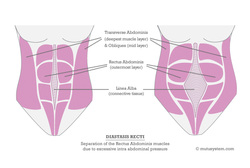 Diastasis is separation of the abdominal muscles, the Rectus Abdominis specifically. It happens most commonly in women post partum though it can happen to anyone male or female for a variety of reasons. The linea alba (as in the picture at left) is the connective tissue that holds the rectus abdominis together and everyone has a gap of about 1 finger width between those muscles. If you lay down and lift your head off the bed/floor with your fingers on your midline you will feel your rectus abdominis lift on either side of your finger and you can measure that gap yourself. If you have more than two finger-widths between your muscles at any given point from the ribcage down to the pubic bone, you've got a diastisis or a larger than normal gap that may need repair. Very large diastasis' can be healed surgically, but it is always recommended to start with a rehab program before you pursue a surgical option. Rebecca's JourneyI developed a small diastasis during my first pregnancy, and having a C-Section delivery after 36 hours of labor only made it worse. Luckily for me, it was small and healed on its own with little to no intervention on my part. Fast forward two years later to another labor and deliver (successful VBAC, woohoo!) leading to another diastasis. While recovering from a vaginal birth is much easier and quite preferable to C-Section recovery, I had a 2 year old son at home who was 35 pounds and wasn't going to stand for not being carried around by mama. I did my best with posture and position, but I lifted my son daily and often and he was FAR beyond the 10 lb weight limit my midwife attempted to impose on my postpartum. With a belly still stretched from pregnancy, this gave my abdomen no chance to heal and the result was a diastasis almost 5 finger widths across at my belly button a year later that was not going to heal on its own. So here is a picture of my diastasis belly before I started the Tupler Technique program: (Yes, I'm in my pajamas, wasn't really thinking about sharing the photos when I took the picture…) As you can see, the top of my belly button kind of protrudes a little bit. I used to have a true "innie" before, and above my belly button is this strange pouch that I assure you I didn't used to have. This is me comfortably back to pre-pregnancy weight, fyi. The crazy thing is that when I would tense my stomach muscles or try to suck them in, I would still have that strange upper belly bulge. After I ate it would stick out even more like my stomach was physically protruding, and I was experiencing some regular back pain from the abdominal weakness. Not fun, folks, not fun. I waited until the weather got a little colder here in Portland because the Tupler Technique involves exercises, movement modifications (sitting, standing correctly etc) and wearing a specialized splint (read "girdle") to physically hold the separated halves of the muscle closer together so the connective tissue in between has a chance to shorten up without being overstretched again and again. The splint is thick and heavy and warm and I knew I couldn't wear it in the summer months. Okay, so now I am 3 weeks into the process and here is what my abdomen looks like: I haven't weighed myself but I think I have gained some weight - the program involves NO EXERCISE aside from brisk walking until you get farther along so you don't risk stretching your tenderly healing connective tissue, and since I live on spinning and aerobics this is affecting me quickly. Still, I know the wait will be worth the reward and that I can lose what little I might gain in a few more weeks with focused effort. You can see the splint marks there on my abdomen, but I am very impressed with the results thus far and feel very confident that my tummy will go back to its previous diastasis-free state once I am done. I've already had to order a second splint in the smaller size this week because my abdomen has come together so much that the arms of the splint wrap all the way around to my back, where they used to wrap only to my hips just a few weeks ago. To make it to 6 weeks and beyond I will therefore need a smaller one. I know my success is also due to the added alternative medicine steps I am taking to give my body the best chance possible to heal. The full Tupler program is actually 18 weeks if you stick with it religiously. It takes a minimum of 6 weeks for your transverse abdominis muscle (your internal muscular girdle if you will) to strengthen enough to start supporting you appropriately and for the connective tissue to heal enough to hold well, so depending on the severity of your diastasis you may be able to shorten the term of the splinting, but it is recommended to go a full 18 weeks if you want the best results from the program. Rebecca's Diastasis Rehab ProgramThree weeks in and 9-15 to go depending on my perseverance, and here is what I am doing to heal my diastasis on all fronts:
The Tupler Technique program also called "Lose Your Mummy Tummy" can be ordered on Julie Tupler's website - she is the RN who developed and did the research to prove its effectiveness. If you have a severe diastasis it is highly recommended to work with a certified professional to get sized right for your splint and have help with the exercises. You can find a list of licensed therapists on Julie's website. Here in the Portland area, the "Tummy Team" is the best known group who specialize in diastasis though I don't know that they are actually Tupler certified. I freely admit that I ordered the kit and have been pursuing it on my own. My body awareness is fair and I have a physical therapist husband at home to assist me, so I feel confident in my ability to follow the directions of the program without going to the Tummy Team myself. 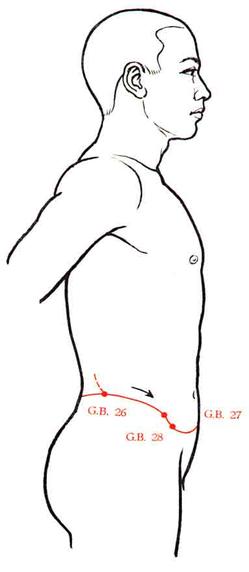 Next, on my program above is Acupuncture focused on the Dai Mai along with Chinese Herbs appropriate to my pattern, and I'll tell you a little more about that. According to TCM theory, connective tissue weakness is related to blood deficiency and weak Liver function. Indeed, Blood and Yin are deeply depleted in pregnancy and birth due to the needs of the fetus and the challenge and vigor of labor. I always recommend women eat chinese herbal soup or congee post partum to help rebuild their Qi and Blood post partum in addition to getting regular Acupuncture. For Diastasis specifically, it is important to focus Acupuncture treatment not only on the Liver and Spleen to help tonify and build blood to strengthen the connective tissue, but also on the Dai Mai a.k.a. the Belt or Girdle channel (as seen at left). This is an extraordinary meridian that encircles the waist exactly where the worst of a diastasis is found, and the presence of a diastasis means a weakening or disruption of proper Qi flow in this meridian. Like the Transverse Abdominus muscle - the only muscle that encircles the waist, the Dai Mai is the only channel that travels horizontally across the body instead of vertically. This means it has a very difficult job to do and it must do this job alone - just like the transverse abdomens! Chinese Medicine is also hallmarked by what is called "syndrome differentiation" which translates as individual treatment for individual needs. I have an energetic baseline of Spleen and Heart Qi deficiency with Dampness so I am taking herbal tonics specific to this pattern and I believe treating my constitution this way is further helping me to recover and rebuild well. The western nutritional supplements I am taking are a basic protocol I recommend for everyone - multi vitamin and fish oil/EFA in particular, B vitamins, green food - with the Ligaplex which is a whole food supplement specifically for ligament and connective tissue rebuilding and repair. Standard Process supplements are very tried a true - a company from the 1920's with a strong track record of success. I have taken the Ligaplex before for heart palpitations related to leaky (weak connective tissue) heart valves and found it helpful. Indeed, my regular heart palpitations related to a congenital murmur have actually decreased over the past 3 weeks as well. The result so far is what you see in the pictures above - at only 3 weeks in my abdomen is drastically changed, and my back pain is also gone. How much the back pain is gone because I am effectively wearing a brace 24/7 and how much it is gone due to strengthening is yet to be seen, but I can tell that my transverse abdominus is noticeably stronger, so I am hopeful that the weak-ab related back pain is going to go away as well as my "mummy tummy" as part of this process. I hope I will make the full 18 weeks of splint-wearing but I am not sure. It already feels tedious to wear it and dress around it, and my abdomen is healing rapidly, so my goal at this point is to make it to 12 weeks and then reassess. Even if I don't wear the splint 24/7 anymore I will definitely continue with the increasing transverse abdominus exercises for the full 18 weeks. Julie Tupler has a saying that "every belly should be checked" and as I move ahead with this process, I think she is right. Even if you don't have a diastasis, learning to do these kinds of transverse abdominus exercises and learning to engage that muscle consciously during all strenuous activity is very valuable - I can already tell that my back is much safer for learning to use my abdomen this way. I feel very confident recommending her program and I will definitely be educating more of my pregnant and postpartum patients about it as time goes on, because even a mild diastasis deserves care and attention. After all, all mom's want to be able to lift and carry their children safely without compromising their backs and essentially, that is what this program will allow you to do - for as long as your children let you pick up and cuddle them! As I continue with this journey I will post about it more, and if you have any questions or know someone who might have a diastasis or is struggling to heal a diastasis, please send them my way. I would be overjoyed to help other people heal from this uncomfortable weakness and learn how to "lose their mummy tummies!" Until next time, ~Rebecca September is National America On the Move Month, hooray! So its time to get off your duff and get moving while the Fall weather still provides some fair weather days to do so. America On the Move, a nonprofit organization dedicated to helping Americans lead healthier lifestyles, is the unofficial sponsor of this event and while their website isn't perfectly user friendly, it does allow you to track your activity, set goals, participate in social media community and browse a list of articles to help you learn more about eating well, staying active and making positive lasting lifestyle change. They have a great list of 100 ways to add 2000 steps to your day HERE and its surprising how little it can take. Did you realize that an extra 2000 steps will burn at least 100 additional calories? That might not sound like much when your average restaurant meal in the US is 1,000 calories, but hey - that's half a nonfat latte and every little bit really does count. An extra trip encircling the grocery store as you shop for dinner, using the bathroom on the far side of the building at your office (if there's more than one) taking the stairs - everything adds steps, burns calories and keeps you moving leading to healthier you. Lifestyle Change - its a journeyI personally find that lifestyle change towards lasting wellness is a journey. Sometimes you are motivated to change your diet, your exercise habits, the way you mentally process stressful situations, and sometimes you feel like you are struggling and slogging along. As someone who has battled an eating disorder and weight issues, I know it isn't easy and depending on the month and the day, I still struggle myself. I remember my mom always used to get mad at me as a kid (or teen...) if I used the word "just." She could never agree with the Nike slogan, because to her saying "just do X" or "lets just have..." was grossly inadequate for all the steps and stages of any given activity. As a kid, this lead to many mother daughter arguments, but as an adult I see her perspective. Even fixing a simple one pot dinner involves shopping, cutting, chopping, measuring - with two kids hanging on my coat tails, my mom to care for and my solopreneur Acupuncture practice - I often agree with my mom that there is no "just" anymore. At the same time I recognize that the Nike-ism "Just Do It" is a state of mind as much as a call to action. When stress and overwhelm get the best of me I feel like everything - even taking a 10 minute walk - is impossible, but when I can take a deep breath and *be* in the moment, I see that everything that needs doing is just another step, and I can only physically do one thing at time anyway. Every step brings me one step closer to whatever my goal is - be it dinner or exercise or bill paying or anything else - and that is all I need; to keep making measured progress and to recognize it as such. I think the hardest part of any lifestyle change journey is managing those times when you find yourself in the valley, when stress and overwhelm make it feel impossible to "just do" anything. Those are the most important times to have your best wellness tools handy - to keep that (acupuncture!) appointment for self care, to decide the dishes can wait in favor of a walk or some meditation or a few yoga sun salutations. Make Your Self Care Tools More Readily AvailableIf you have a hard time accessing your tools - the self care interventions you know you should do and could do easily if you *just* stopped and did them - make them a little more readily available. You can do this by programming a daily reminder in your phone during the most stressful time of day that tells you to BREATHE or reminds you to schedule self care time. You can keep a white board or bulletin board in a prominent place in your house where you post cards or pictures of 10-15 minute self care activities to remind you of things that are easy to do, or find an app for that!
My favorite app is GPS For the Soul by the Heart Math Institute. It uses the camera to track heart rate and gives you a check in with your stress level, and then you can chose any number of short guided meditations and timed breathing exercises to help you calm down and refocus in the moment. Its a simple thing, but sometimes simple works best. In fact, I am going to make sure to use that app myself today just to check in because you can never do too much to keep yourself on track with decreasing stress and maintaining wellness. Until next time, ~Rebecca Mantras can be powerful tools to keep you in the moment and while I don't employ them as often as I should, I believe in them and have used them to my advantage. One of my favorites is from my Poekoelan days of old. It is short, sweet, and applicable to most any situation: Acceptance If you're feeling overwhelmed in the moment or just feel like you need to center and focus, take a few minutes to close your eyes and repeat this mantra in your mind. Even 5-6 repetitions while breathing deep into your belly can make a world of difference in the middle of the busy day.
So breathe deep, and have a wonderful week! ~Rebecca Watch Eat, Fast and Live Longer with Michael Mosley - Preview on PBS. See more from Michael Mosley. So I wasn't intending to watch Michael Mosley's documentary about fasting for health and wellness on OPB Wednesday night, but I found myself zonked out on the couch at just the right time. Despite my intention to catch up on So You Think You Can Dance (I'm mildly addicted, just mildly...) I was mesmerized and just had to check it out.
Let me start by saying that fasting is not a traditional part of Acupuncture and Chinese Medicine. It is a relatively common naturopathic technique, and can be part of an elimination diet, however, beyond being something gaining popularity for general health. It is not something to be undertaken without supervision if you have chronic health concerns, especially if you are diabetic, and is not appropriate while pregnant or nursing. That said, theoretically being overly hungry is a bad thing from an energetic perspective. Hunger is a sign that your Spleen and Stomach Qi are waning and if they wane too far, your body pulls energy from the Kidney - your foundation and energetic reserve - to continue normal (energetic) body processes. Intermittent fasting involves shorter fasting times at more regular intervals, and I believe that this is more in line with Traditional Chinese Medicine theory since you don't go for such long periods of intense hunger. When it comes to longevity, modern research is also clearly showing that calorie restricted diets can contribute to long life. Even more interesting is the recent research - which this documentary reviews and explores - about intermittent fasting for helping to regulate insulin levels (in non-diabetics), decrease cholesterol, control weight and improve health. To clarify again, intermittent fasting is short term regular fasting - meaning not eating for 6-8 hours anywhere from two to four days a week on an alternating pattern i.e. "feed" one day and "fast" another. Seemingly, this has a similar effect as semi regular long-term fasting (meaning a 4 day fast every few months) and has comparable health effects to a daily calorie restricted diet. If you think about it from a hunter-gatherer past perspective, it kind of makes sense that intermittent fasting would be somewhat natural to our bodies. If you follow the seasons and the herds, you are constantly going between periods of feast and famine - indeed, our body stores fat to prepare for leaner times - but in modern life, the average American with a home and job doesn't have times so lean that they are forced to go without, even for a 6-8 hour period, unless they are just too busy to eat. Fast food and the carb+meat+dairy heavy modern American diet is also very calorically dense - again not lending itself to "famine" like conditions even for a short while, without making a conscious effort to achieve them. One of the statistics in this documentary that really caught me by surprise was about lifespan during the Great Depression. Did you know that life expectancy during the Great Depression increased by 6.2 years? Yeah, leaner times, longer lives. Who knew? Another proponent of intermittent fasting is Walter Willett, MD, the Harvard Researcher and author of "Eat, Drink and Be Healthy" which has long been one of my favorite books about general healthy eating. This book advocates for a diet of 1600 calories a day on average, but if you have a hard time maintaining that he recommends fasting one day a week to keep your weekly calories to a minimum. Not a bad plan, and definitely in line with this recent research. All this said, however, the benefits of intermittent fasting do not mean that if you fast intermittently you can eat whatever you want and not exercise - this method is a technique to help you reach and maintain your health goals, not a way to avoid eating right, supplementing right and exercising. Indeed, regular fasting means your nutritional needs become that much more focused on the days that you do eat full meals, and make supplementation for health that much more important to help you ensure that you are getting the nutrients you need for a long and healthy life. What I like best about the idea of intermittent fasting is that it feels moderate to me. You aren't doing anything extreme for any prolonged period of time - you're just taking a break from eating for a short duration - so there's a focused time delimited period of cravings that I think most anyone can overcome. Again, it doesn't mean you can eat whatever you want on "feed" days, but it does help balance out an extra piece of cake here and there, so that you don't feel like you have to maintain a "perfect" diet every day to be well; you just have to do the best you can do and indulge consciously. For me? Intermittent fasting is the newest addition to my personal repertoire of activities for good health. Exercise is tough at the moment as a mom of two little ones, but I get just enough not to feel insane. Supplementation is a given and I participate in the same All Ways Wellness program I promote for my patients taking regular multivitamin, fish oil, green food, B vitamins and probiotic supplements and get acupuncture regularly to stay on track. Considering that ALL my grandparents who died of natural causes died of heart attack or stroke, to say heart disease is risk factor for me is an understatement. With a congenital heart murmur to boot, I can't afford to mess around with my heart health if I want to be here to see my children grow up some day, so if intermittent fasting can help give me a leg up on keeping my cholesterol down I'm all in. My plan is to start with once a week for the next 4-6 weeks with a goal to increase to twice a week after that. More than twice a week would be difficult for me between the kids and work (my son won't eat if I'm not sitting at the table eating myself at this stage...), but evidence suggests that even two days a week can have a significant impact on your long term health, so here goes! I'll check in here about my progress around the 6 week mark, so if you're interested be on the lookout for a "Rebecca Fasting Experiment Update" to come. Yesterday was my first day - I figured fasting at work when I'm busy would be easier than fasting at home - and it went great. Plenty of tea and water later, I felt like I sailed through the day and was almost hyper-productive. Wish me luck for next week folks! Until next time, ~Rebecca I am very excited to announce that my husband, Brian Kitzerow, DPT, is now working at Goodell PT in SW Portland and is accepting new patients! We are very excited that he is working in an outpatient setting and that we can share referrals now. I was so excited that I had to blog about it, and I can't wait to see what our collaborations bring for our patients. With a strong background in biochemistry, a long history of physical activity including soccer, track & field and martial arts, he has the education and experience to excel in his work and I can tell you that he does. He has a special interest in chronic and neuropathic pain and is enjoying working with ESD patients in particular - a specialty at Goodell. ESD stands for Ehlers-Danlos Syndrome, an inherited connective tissue disorder, so if you know anyone with chronic pain, EDS, neuropathic pain or someone who has been in a car accident lately, please think of sending them his way with Rebecca's double thumbs up.
I also have to share that I believe the combination of Acupuncture and Physical Therapy can be pretty amazing. It can be difficult to commit to so much regular treatment, I understand that (from experience), but if you can commit to the time required to combine therapies, your results will be accelerated and longer lasting.
Acupuncture can straighten out your energetic system, decrease stress and pain, and re-habituate your body to a state of balance. Physical Therapy will balance the body physically, improve strength and flexibility, and give you the tools you need to heal and continue your preferred activity level without incurring new injury. Its a winning combination because the two approaches are just the right amount of different and complementary. I feel like a personal testament to this powerful combination because while you may not think it to look at me, I've had a lot of injury in my life. I've had tendonitis, bursitis, meniscus frays and tears, ACL tear and knee surgery, piriformis syndrome, dislocations, subluxations, back spasms and a motor vehicle accident. I'm one of those people that dreads filling out new medical forms because there is never enough room for all my injuries on there and because the doctor usually gawks at my list. This long list, however, means I am very well acquainted with pain and pain treatments experientially and professionally, and I have no problem sharing that my best results have come from combining Acupuncture and Physical Therapy. That is why I am so excited to be able to refer patients to my husband in this setting because I know he is top notch and an excellent physical diagnostician. That is also why I often recommend Physical Therapy - its effective, covered by insurance, and gives YOU tools that you can take home with you and apply to the way you use your body for years to come. So with this note, please welcome my husband to the world of outpatient clinics, and if you have a physical therapy need or know someone who does think about sending them his way! Until next time, ~Rebecca |
AuthorsRebecca M H Kitzerow is a Licensed Acupuncturist practicing in La Center, Washington. With over a decade of experience she has won 10 Nattie consumer choice awards from Natural Awakenings Magazine since 2014. Archives
July 2024
Categories
All
|
Photos from Hey Paul Studios, BeGreen_Studio, Pawel Pacholec, 1950sUnlimited, toulupaliaqaz, Joelk75, OnTask, Robert Gourley, cnu_sports, Mitya Ku, wuestenigel (CC BY 2.0), FootMassagez, 401(K) 2013, Mariana Heinz, @EdwardTerry, fishhawk, liverpoolhls, torbakhopper, Boemski, dolomitibl, Driscolltheque, Dave n Laura, Vaping360, MVWorks, Life Mental Health, MVWorks, mikefats, Scot Nelson, jfl1066, wZa HK, ruurmo, Guadalupe Cervilla, Army Medicine, GViciano, torbakhopper, adrigu, Saulo Cruz, Ben Cumming, marniejoyce, kcxd, JasonCorey, kanenas.net, Live to Create Photography, gm.esthermax, Unique Hotels Group, Zenspa1, mysiana, Tobias Lindman, Leader Nancy Pelosi, Kristoffer Trolle, swanksalot, Bill Selak, Parker Knight, stimpsonjake, Gedankensprudler, SuperFantastic, tonynetone, marniejoyce, JeepersMedia, Illusive Photography, 'Ajnagraphy', Iban Torras, scotted400, gtall1, dvanzuijlekom, BPPrice, Skley, torbakhopper, Renato Ganoza, anka.albrecht, QUOI Media, Public Domain Photos, Instant Vantage, Victor Tongdee, Free Grunge Textures - www.freestock.ca, sportEX journals, Nadja Tatar, angela n., marniejoyce, MVWorks, Karolina Kabat, Thomas Fisher Rare Book Library, UofT, ginnerobot, tracilawson, haven't the slightest, My Photo Journeys, Pierre Willemin, Florena_Presse, SuperFantastic, colindunn, zzkt, TraumaAndDissociation, ER24 EMS (Pty) Ltd., shixart1985 (CC BY 2.0), marniejoyce, Tomás Fano, freestock.ca ♡ dare to share beauty, Archives New Zealand, Jaykhuang, airdrie.m, Go-tea 郭天, OnTask, wuestenigel, focusonmore.com, Disney | ABC Television Group, Andrew Gustar, Didriks, ConstructionDealMkting, charlywkarl, barnimages.com, Lel4nd, runwaypilates, michaelstephanfotografie, McLevn, TraumaAndDissociation, eLife - the journal, Lars Plougmann, wuestenigel, shixart1985, boviate, davis.steve32, kevin dooley, @the.photoguy (insta), frederic.gombert, Feathering the Nest, Victor Tondee, shixart1985, wuestenigel, Joe K Gage, kennethkonica
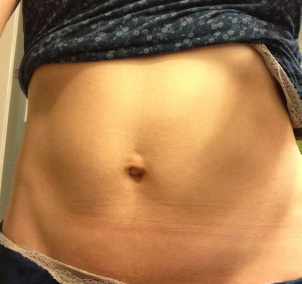
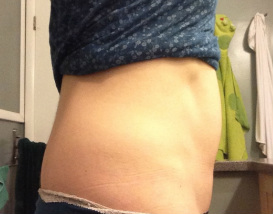
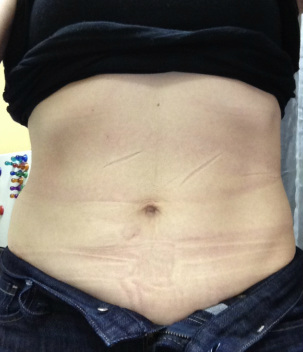
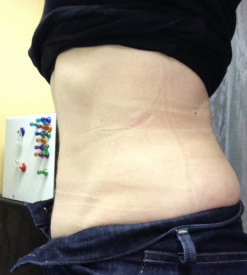
 RSS Feed
RSS Feed
